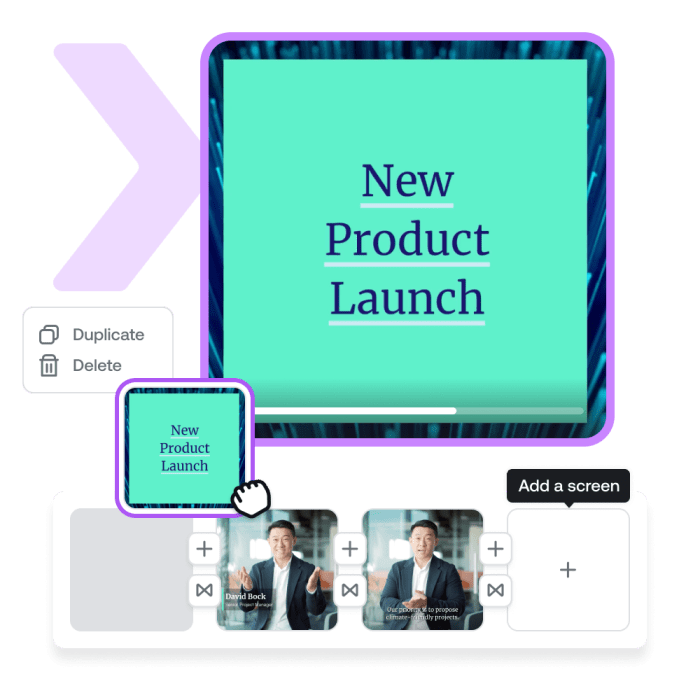Developing Product Videos is a game-changer in the world of marketing, unlocking the potential to boost sales and engage customers like never before. Get ready to dive into the exciting realm of creating captivating visual content that will set your brand apart.
From planning and filming techniques to editing and distribution strategies, this guide will equip you with the tools needed to take your product videos to the next level.
Importance of Product Videos

Product videos play a crucial role in marketing by providing a visual and engaging way to showcase products to potential customers. These videos can significantly increase sales and customer engagement by giving viewers a better understanding of the product’s features, benefits, and uses.
Enhanced Customer Experience
Product videos create a more immersive shopping experience for customers, allowing them to see the product in action and visualize how it can meet their needs. This visual representation helps build trust and confidence in the product, leading to higher conversion rates and repeat purchases.
Brand Perception
High-quality product videos reflect positively on the brand, conveying a sense of professionalism and attention to detail. When customers see well-produced videos that highlight the product’s value and quality, they are more likely to perceive the brand in a positive light. This can lead to increased brand loyalty and advocacy among customers.
Planning Product Videos
When it comes to planning product videos, there are several important steps to consider in order to create a successful video that effectively showcases your product.
Steps Involved in Planning a Product Video Shoot
- Define the purpose of the video: Determine what you want to achieve with the video, whether it’s to inform, educate, entertain, or sell.
- Identify your target audience: Understand who your video is intended for in order to tailor the content and messaging accordingly.
- Create a script: Develop a detailed script outlining the key points, features, and benefits of the product that you want to highlight in the video.
- Choose the right location: Select a suitable location that aligns with your product and brand image, whether it’s a studio, outdoor setting, or specific backdrop.
- Plan the equipment needed: Determine what cameras, lighting, sound equipment, and props are necessary to capture high-quality footage.
- Organize the logistics: Coordinate schedules, prepare props, and ensure all necessary elements are in place for a smooth video shoot.
Tips for Creating a Storyboard for Product Videos
- Start with a clear objective: Define the main message and goals of the video to guide the storyboard creation process.
- Break down the video into scenes: Artikel the sequence of events and visuals that will help convey the product story effectively.
- Add visual cues and shot descriptions: Include details on camera angles, transitions, and any special effects or animations to enhance the storytelling.
- Consider pacing and timing: Plan the duration of each scene to maintain viewer engagement and ensure the video flows smoothly.
- Review and revise: Seek feedback from team members or stakeholders to refine the storyboard and make any necessary adjustments before filming.
Importance of Setting Clear Objectives Before Filming Product Videos
Having clear objectives before filming product videos is crucial to ensure that the video aligns with your overall marketing goals and effectively conveys the intended message to your target audience. By setting clear objectives, you can focus on creating content that resonates with viewers, drives engagement, and ultimately leads to the desired action, whether it’s making a purchase, signing up for a service, or learning more about the product. Clear objectives also help streamline the production process, making it easier to make decisions on creative elements, messaging, and distribution channels to maximize the impact of your product videos.
Filming Techniques
When it comes to creating engaging product videos, using the right filming techniques is key to capturing your audience’s attention and showcasing your product effectively. Here are some tips to help you elevate your product videos:
Use of Multiple Angles
- Consider filming your product from multiple angles to give viewers a comprehensive view of all its features.
- Experiment with close-up shots to highlight intricate details and wide-angle shots to show the product in its entirety.
- Utilize overhead shots or side angles to provide different perspectives and create visual interest.
Focus on Product Features
- Ensure that each feature of your product is clearly visible and demonstrated on camera.
- Use macro lenses for close-up shots of small details and wide shots to showcase the overall functionality of the product.
- Highlight unique features through slow-motion shots or detailed zoom-ins to capture viewers’ attention.
Lighting and Audio Considerations
- Proper lighting is essential for creating high-quality product videos. Use natural light or soft artificial light to avoid harsh shadows and ensure the product is well-lit.
- Consider using a reflector or diffuser to control the light and minimize glare on reflective surfaces.
- Pay attention to audio quality by using a microphone to capture clear sound without background noise. Consider using background music to enhance the viewing experience.
Editing and Post-Production: Developing Product Videos

Editing and post-production are crucial steps in creating engaging product videos that capture the audience’s attention. This phase allows you to fine-tune the footage, add visual elements, and ensure brand consistency to deliver a compelling final product.
Editing Process, Developing Product Videos
- Start by organizing your raw footage to identify the best clips that showcase your product effectively.
- Trim and cut the footage to remove any unwanted sections and create a seamless flow of visuals.
- Enhance the colors, lighting, and overall visual quality of the video using editing software.
- Add transitions between clips to create a smooth transition between scenes.
Adding Text, Graphics, and Music
- Use text overlays to highlight key features, benefits, or calls to action related to your product.
- Incorporate graphics or animations to make the video more visually appealing and engaging.
- Select background music or sound effects that complement the mood of the video and enhance the viewing experience.
- Ensure that the text, graphics, and music align with your brand’s tone and messaging to maintain consistency.
Maintaining Brand Consistency
- Use your brand’s color palette, fonts, and logo throughout the video to reinforce brand recognition.
- Ensure that the overall style and tone of the video align with your brand’s identity and values.
- Avoid using conflicting visuals or messages that could dilute your brand’s image and messaging.
- Consistent branding in post-production helps build trust with your audience and reinforces your brand’s reputation.
Platforms and Distribution
When it comes to sharing product videos, choosing the right platforms can make a huge difference in reaching your target audience. Let’s dive into the best platforms for sharing product videos, strategies for maximizing reach and engagement on social media, and tips for optimizing product videos for different platforms.
Best Platforms for Sharing Product Videos
- YouTube: Known as the second largest search engine, YouTube is great for product tutorials, demos, and in-depth explanations.
- Instagram: Perfect for short and visually appealing product videos, especially for a younger audience.
- Facebook: With a large user base, Facebook is ideal for reaching a wide audience through product videos and live streams.
- LinkedIn: Great for B2B product videos, industry insights, and thought leadership content.
Strategies for Maximizing Reach and Engagement on Social Media
- Create eye-catching thumbnails and titles to grab users’ attention.
- Use relevant hashtags to increase discoverability on platforms like Instagram and Twitter.
- Engage with your audience through comments, messages, and live Q&A sessions.
- Collaborate with influencers or partners to expand your reach and credibility.
Tips for Optimizing Product Videos for Different Platforms
- Customize video dimensions and lengths according to platform requirements (e.g., square videos for Instagram, longer videos for YouTube).
- Add subtitles or captions for viewers who watch videos without sound, increasing accessibility and engagement.
- Include clear CTAs (Call to Actions) directing viewers on what to do next, such as visiting your website or making a purchase.
- Analyze platform-specific analytics to understand what content performs best and adjust your strategy accordingly.





